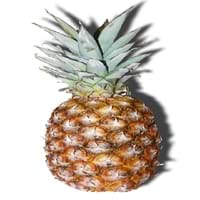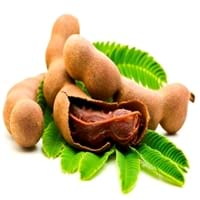Health Benefits
Asthma treatment, Bronchitis treatment, Cancer prevention, Heart care, Increases metabolic rate
Boosts immune system, Boosts respiratory health, Cancer prevention, Digestive aid, Piles treatment
General Benefits
Anti-inflammatory properties, Controls blood pressure, Digestive aid, Eye care, Healing of wounds, Maintains healthy cholesterol level, Strengthens bones, Treatment of sinusitis, Treatment of common cold
Beneficial in improving nerve function, Protects against parasites and worms, Relieves pain
Skin Benefits
Anti-aging benefits, Brightens and lightens complexion, Skin cleansing, Treatment of acne, Treatment of dark spots
Anti-aging benefits, Brightens and lightens complexion, Exfoliates skin, Hydrates skin, Treatment of dark spots
Hair Benefits
Prevents hair loss
Prevents hair loss
Allergy Symptoms
Abdominal pains, Itching in tongue and other parts of mouth, Sneezing, Swelling, Tingling sensation in wrist and face, Vomiting, Wheezing
Abdominal pains, Breathing difficulty, Dizziness, Eczema, Fainting, Hives, Itching, Nasal congestion, Swelling of face, Tingling sensation in mouth, Vomiting
Side Effects
Causes swollen mouth, Allergic reaction, Diarrhoea, Nausea, Skin rash, Vomiting
Decrease in blood sugar levels, Induces acid reflux, Allergic reaction, Tooth decay, May form gallstones
Best Time to Eat
Best if taken as a breakfast (or empty stomach), As a snack in the late afternoon, Eat the fresh ones, avoid mixing with any other foods, don't eat after meal., Morning time (before lunch)
Along with meal, As a snack in the late afternoon, Don't consume at night and before bed, Strictly avoid empty stomach
Vitamin B5 (Pantothenic Acid)
Vitamin C (Ascorbic Acid)
Vitamin K (Phyllochinone)
Calories in Fresh Fruit with Peel
Not Available
Not Available
Calories in Fresh Fruit without Peel
Calories in Canned Form
Not Available
Type
Berry, Tropical
Tropical
Season
Autumn
Spring, Summer
Varieties
Smooth Cayenne, Abacaxi, Red Spanish and Queen
PKM 1, Urigam, Hasanur, Tumkur prathisthan, DTS 1 and Yogeshwari
Color
Yellow
Brown, Reddish-brown
Inside Color
Yellow
Brown
Shape
Oval
Curving Cylinder
Taste
Strong, Sweet, Tart
Sour-Sweet
Origin
Central America, South America
Africa
Grows on
Not Available
Trees
Soil Type
Clay, Sandy loam, Well-drained
Loam, Sandy, Sandy loam, Well-drained
Climatic Conditions
Hot, Sunny
Humid to dry, Rainfall, Warm to hot climate
Facts about
- A single pineapple takes 3 years to reach maturation.
- Pineapple is not an apple, but is actually a berry.
- The name is with reference to its resemblance to pine cones.
- Pineapple is sweeter if scales are more.
- Tamarind is used to prevent body odor.
- African children use the tamarind seeds in games.
- No cases of tamarind toxicity or allergy reported till date.
Top Producer
Costa Rica
India
Other Countries
Brazil, India, Philippines, Thailand
Africa, Australia, Brazil, China, Mexico, Nigeria, Sudan, Taiwan
Top Importer
United States of America
United States of America
Top Exporter
Costa Rica
Thailand
Botanical Name
Ananas comosus
Tamarindus indica
Synonym
Ananas sativus
Tamarindo, tamarindus
Subkingdom
Tracheobionta
Tracheobionta
Division
Magnoliophyta
Magnoliophyta
Class
Liliopsida
Liliopsida
Subclass
Commelinidae
Rosidae
Family
Bromeliaceae
Fabaceae
Species
A. comosus
Tamarindus indica
Generic Group
Pineapple
Tamarind Sub
Difference Between Pineapple and Tamarind
We might think that Pineapple and Tamarind are similar with respect to nutritional value and health benefits. But the nutrient content of both fruits is different. Pineapple and Tamarind Facts such as their taste, shape, color, and size are also distinct. The difference between Pineapple and Tamarind is explained here.
The amount of calories in 100 gm of fresh Pineapple and Tamarind with peel is Not Available and Not Available and the amount of calories without peel is 50.00 kcal and 239.00 kcal respectively. Thus, Pineapple and Tamarind belong to Low Calorie Fruits and High Calorie Fruits category.These fruits might or might not differ with respect to their scientific classification. The order of Pineapple and Tamarind is Poales and Fabales respectively. Pineapple belongs to Bromeliaceae family and Tamarind belongs to Fabaceae family. Pineapple belongs to Ananas genus of A. comosus species and Tamarind belongs to Tamarindus genus of Tamarindus indica species. Beings plants, both fruits belong to Plantae Kingdom.









